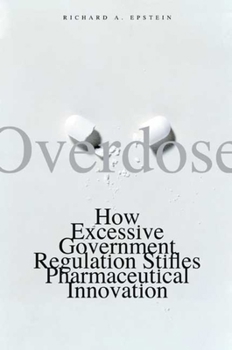Overdose: How Excessive Government Regulation Stifles Pharmaceutical Innovation
Select Format
Select Condition 
Book Overview
An analysis of how we regulate the pharmaceutical industry: are we protecting patients or blocking the development of useful new drugs? This book is the first to offer a comprehensive examination of the pharmaceutical industry by following the tortuous course of a new drug as it progresses from early development to final delivery. Richard A. Epstein looks closely at the regulatory framework that surrounds all aspects of making pharmaceutical products today, and he assesses which current legal and regulatory practices make sense and which have gone awry. While critics of pharmaceutical companies call for ever more stringent controls on virtually every aspect of drug development and approval, Epstein cautions that the effect of such an approach will be to stifle pharmaceutical innovation and slow the delivery of beneficial treatments to the patients who need them. The author considers an array of challenges that confront the industry--conflicts of interest among government, academe, and the drug companies; intellectual property rights that govern patents; FDA regulation; pricing disputes; marketing practices; and liability issues, including those brought to light in the recent VIOXX case. Epstein argues that to ensure the continuing creativity, efficiency, and success of the pharmaceutical industry, the best system will feature strong property rights and clearly enforceable contracts, with minimal regulatory and judicial interference.
Format:Paperback
Language:English
ISBN:0300143265
ISBN13:9780300143263
Release Date:December 2008
Publisher:Yale University Press
Length:296 Pages
Weight:0.95 lbs.
Dimensions:0.7" x 6.1" x 9.2"
Customer Reviews
1 rating
Classic Epstein
Published by Thriftbooks.com User , 18 years ago
This is a great book that will make you think hard about how we regulate the pharmaceutical industry. You probably won't agree with everything but Epstein raises critical issues that need to be considered. If you are afraid of having your ideas being challenged (like the first reviewer) then don't order this book.





